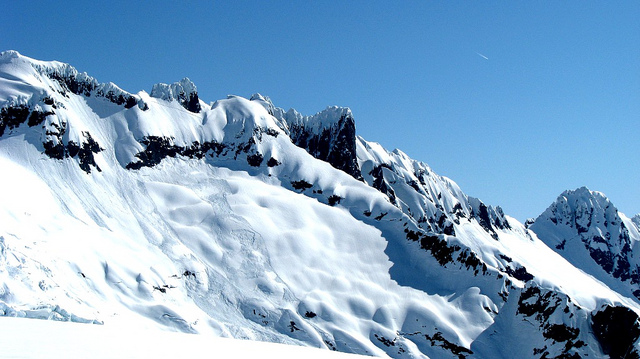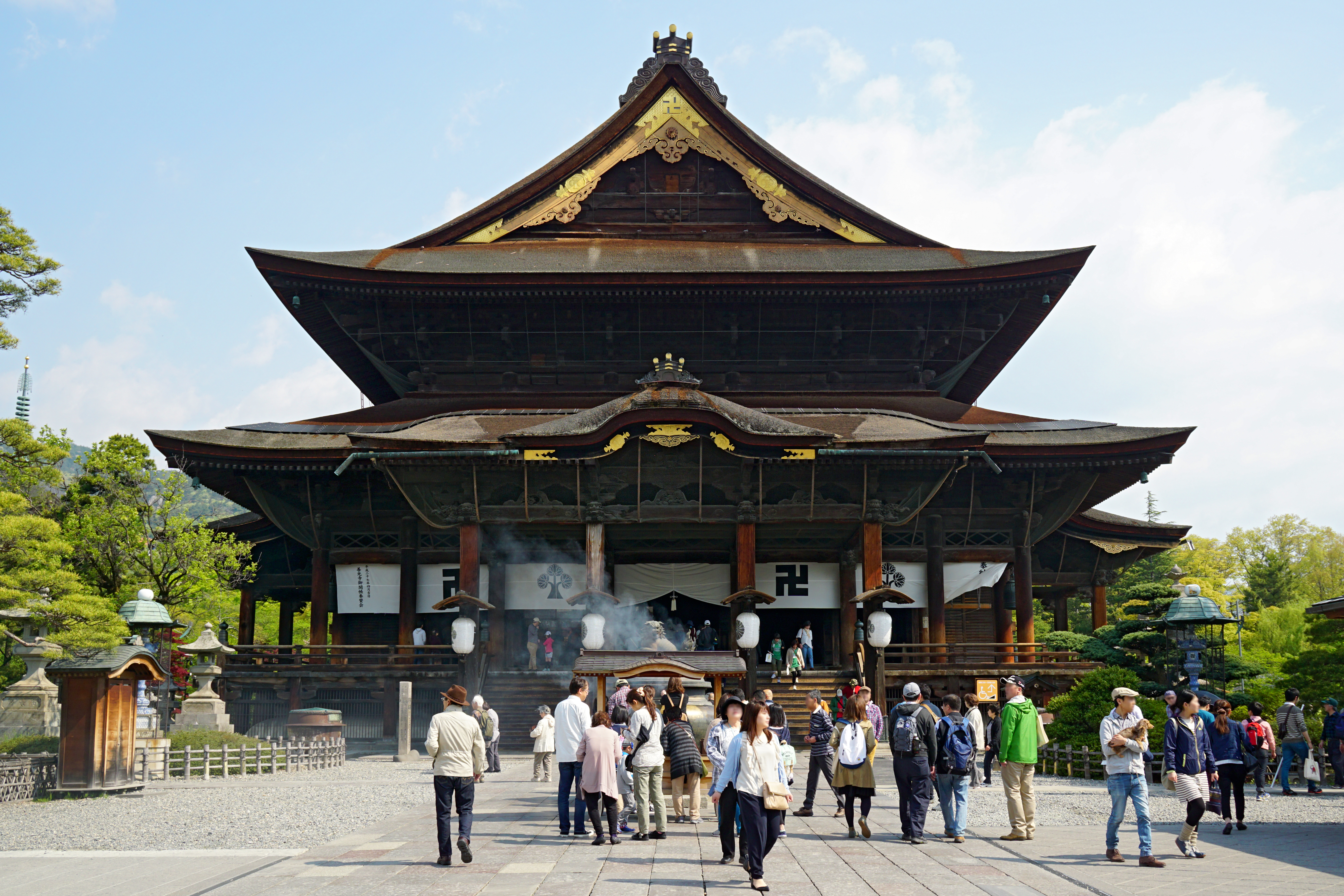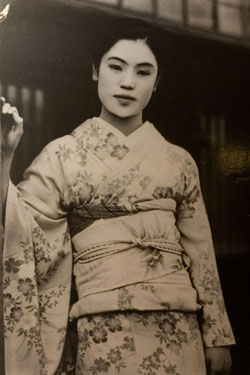|
Snow Country (Japan)
refers to areas in Japan characterized by heavy, long-lasting snowfalls. The rather poetic can refer to any place with heavy or deep snows and is generally understood as a reference to the Sea of Japan side of Honshū (Japan's main island) and the area encompassed by the Japanese Alps, a series of mountain ranges that make up the island's backbone. In its broadest meaning, ''snow country'' means the belt along the Sea of Japan from Yamaguchi (in particular, Shimane) in the south to Honshū's northern tip, as well as Sado Island and Hokkaidō. More narrowly defined, it is used to indicate the area from Fukui to Akita Prefecture, but it is most closely associated with part of Fukui and all of Toyama and Niigata Prefectures. "Heavy Snowfall Zones" refers to places where snowfall and snow cover are severe enough to be a hindrance to the livelihood of inhabitants or the development of local industry. In all, more than half of Japan's land area carries the designation—ten com ... [...More Info...] [...Related Items...] OR: [Wikipedia] [Google] [Baidu] |
Avalanches
An avalanche is a rapid flow of snow down a Grade (slope), slope, such as a hill or mountain. Avalanches can be triggered spontaneously, by factors such as increased precipitation or snowpack weakening, or by external means such as humans, other animals, and earthquakes. Primarily composed of flowing snow and air, large avalanches have the capability to capture and move ice, rocks, and trees. Avalanches occur in two general forms, or combinations thereof: slab avalanches made of tightly packed snow, triggered by a collapse of an underlying weak snow layer, and loose snow avalanches made of looser snow. After being set off, avalanches usually accelerate rapidly and grow in mass and volume as they capture more snow. If an avalanche moves fast enough, some of the snow may mix with the air, forming a powder snow avalanche. Though they appear to share similarities, avalanches are distinct from slush flows, Mudflow, mudslides, Landslide#Debris landslide, rock slides, and serac collap ... [...More Info...] [...Related Items...] OR: [Wikipedia] [Google] [Baidu] |
Regions Of Japan
Japan is often divided into regions, each containing one or more of the country's Prefectures of Japan, 47 prefectures at large. Sometimes, they are referred to as "blocs" (ブロック, ''burokku''), or "regional blocs" (地域ブロック, ''chiiki burokku'') as opposed to more granular regional divisions. They are not official administrative units, though they have been used by government officials for statistical and other purposes since 1905. They are widely used in, for example, maps, geography textbooks, and weather reports, and many businesses and institutions use their home regions in their names as well, for example Kyushu National Museum, Kintetsu Railway, Kinki Nippon Railway, list of banks in Japan, Chūgoku Bank, and Tōhoku University. One common division, preferred by the English Wikipedia, groups the prefectures into eight regions. In that division, of the four Japanese Archipelago, main islands of Japan, Hokkaido, Hokkaidō, Shikoku, and Kyushu, Kyūshū make ... [...More Info...] [...Related Items...] OR: [Wikipedia] [Google] [Baidu] |
Matagi
The are traditional winter hunters of the Tōhoku region of northern Japan, most famously today in the Ani area in Akita Prefecture, which is known for the Akita dogs. Afterwards, they spread to the Shirakami-Sanchi forest between Akita and Aomori, and other areas of Japan. Documented as a specialised group from the medieval period onwards, the Matagi continue to hunt deer and bear in the present day, and their culture has much in common with the bear worship of the Ainu people. With the introduction of modern firearms in the 19th century, and mass-production of reloadable cartridges beginning with the Murata rifle, the need for group hunting for bear has diminished, leading to a decline in Matagi culture. Matagi hamlets are found in the districts of Nishitsugaru and Nakatsugaru (Aomori Prefecture), Kitaakita and Senboku (Akita Prefecture), Waga (Iwate Prefecture), Nishiokitama and Tsuruoka (Yamagata Prefecture), Murakami and Nakauonuma (Niigata Prefecture and Nag ... [...More Info...] [...Related Items...] OR: [Wikipedia] [Google] [Baidu] |
Nagano (city)
is the capital and largest Cities of Japan, city of Nagano Prefecture, located in the Nagano Basin (Zenkoji Daira) in the central Chūbu region of Japan. Nagano is categorized as a Core cities of Japan, core city of Japan. Nagano City is the highest prefectural capital in Japan, with an altitude of . The city is surrounded by mountains, the highest of which is Mount Takatsuma (2,353 m), and it is near the confluence of the Chikuma River—the longest and widest river in Japan—and the Sai River. , the city had an estimated population of 365,296 in 160,625 households, and a population density of 438 persons per km². The total area of the city is . Overview Nagano City, located in the former Shinano Province, developed in the Nara period (AD 710 to 794) as a temple town (''monzen machi''). The city of Nagano is home to Zenkō-ji, a 7th-century Buddhism, Buddhist temple that is listed as a National Treasure (Japan), Japanese National Treasure. Zenkō-ji was established at its ... [...More Info...] [...Related Items...] OR: [Wikipedia] [Google] [Baidu] |
1998 Winter Olympics
The 1998 Winter Olympics, officially known as the and commonly known as Nagano 1998 (), were a winter multi-sport event held from 7 to 22 February 1998, mainly in Nagano, Nagano, Nagano, Nagano Prefecture, Japan, with some events taking place in the nearby mountain communities of Hakuba, Karuizawa, Nagano, Karuizawa, Nozawaonsen, Nozawa Onsen, and Yamanouchi, Nagano, Yamanouchi. The city of Nagano had previously been a candidate to host the 1940 Winter Olympics (which were later cancelled), as well as the 1972 Winter Olympics, but had been eliminated at the national level by Sapporo on both occasions. The games hosted 2,176 athletes from 72 nations competing in 7 sports and 68 events. The number of athletes and participating nations were a record at the time. The Games saw the introduction of Ice hockey at the 1998 Winter Olympics, women's ice hockey, Curling at the 1998 Winter Olympics, curling and Snowboarding at the 1998 Winter Olympics, snowboarding. Nati ... [...More Info...] [...Related Items...] OR: [Wikipedia] [Google] [Baidu] |
Snow Country
is a novel by the Japanese author Yasunari Kawabata. The novel is considered a classic work of Japanese literature and was among the three novels the Nobel Committee cited in 1968, when Kawabata was awarded the Nobel Prize in Literature. Writing process Gwenn Boardman Petersen uses ''Snow Country'' as an example of how Kawabata often composed his works. While writing that Japanese novelists often publish "their works in serial form and under various titles" she observes Kawabata is "further noted for his habit of rewriting, adding segments, and making changes in titles and content alike." The first segment, titled appeared in January 1935. Kawabata later wrote that he could not finish his manuscript by the submission deadline of this literary journal, and decided to keep writing and submit a second version of this segment, titled to the general-interest magazine several days later. Kawabata continued to write about the characters, and five more segments were published ove ... [...More Info...] [...Related Items...] OR: [Wikipedia] [Google] [Baidu] |
Tsunan
Ryu-ga-Kubo springs Akasawa neighborhood in Tsunan is a town located in Niigata Prefecture, Japan. , the town had an estimated population of 9,349 in 3480 households, and a population density of 54.2 persons per km². The total area of the town was . Geography Tsunan is located in southwestern Niigata Prefecture, in a mountainous area bordering northern Nagano Prefecture. The town is located on a river terrace of the Shinano River with the town hall at an elevation of 241 meters; however, much of the town area is mountainous, with Mount Naeba (2143 meters) partly located within the town limits. Due to its geographical location between the Sea of Japan and the surrounding Japanese Alps, it has one of the highest annual snowfalls in Japan. There are numerous ski resorts within the region. Surrounding municipalities *Nagano Prefecture ** Sakae *Niigata Prefecture **Tōkamachi ** Yuzawa Climate Tsunan has a Humid subtropical climate with continental influences (Köppen ''Cfa/Dfa ... [...More Info...] [...Related Items...] OR: [Wikipedia] [Google] [Baidu] |
Tōkamachi
is a city located in Niigata Prefecture, Japan. , the city had an estimated population of 28,728 in 19,823 households, and a population density of 86.3 persons per km². The total area of the city was , although some borders of the city are not well defined. Tōkamachi derives its name from the fact that a market was held every tenth day of the month. Similarly, the nearby former town of Muikamachi had its own local market held on days ending in six each month. Geography Tōkamachi is located in an inland region of southwest Niigata Prefecture. Parts of the city are within the borders of the Jōshin'etsu-kōgen National Park. Surrounding municipalities *Nagano Prefecture ** Sakae *Niigata Prefecture ** Jōetsu ** Kashiwazaki **Minamiuonuma ** Nagaoka ** Ojiya ** Uonuma ** Tsunan ** Yuzawa Climate Tōkamachi has a Humid continental climate (Köppen ''Dfa'') characterized by warm, wet summers and cold winters with heavy snowfall. The average annual temperature in Tōkam ... [...More Info...] [...Related Items...] OR: [Wikipedia] [Google] [Baidu] |
Tateyama, Toyama
is a town located in Nakaniikawa District, Toyama Prefecture, Japan. , the town had an estimated population of 26,212 in 9452 households and a population density of 85 persons per km². The total area of the town was . Geography Tateyama is located in east central Toyama Prefecture. The town is located in the Tateyama Mountain Range. Surrounding municipalities *Nagano Prefecture ** Ōmachi *Toyama Prefecture ** Funahashi ** Kamiichi ** Kurobe ** Toyama Climate The town has a Humid subtropical climate (Köppen ''Cfa'') characterized by hot summers and cold winters with heavy snowfall. The average annual temperature in Tateyama is 13.4 °C. The average annual rainfall is 2242 mm with September as the wettest month. The temperatures are highest on average in August, at around 26.2 °C, and lowest in January, at around 2.1 °C. Demographics Per Japanese census data, the population of Tateyama was remarkably stable for several decades but has declined in recen ... [...More Info...] [...Related Items...] OR: [Wikipedia] [Google] [Baidu] |
Mount Zaō
The , commonly called Mount Zaō, are a complex cluster of stratovolcanoes on the border between Yamagata Prefecture and Miyagi Prefecture in Japan. The central volcano of the group includes several lava domes and a tuff cone, Goshiki-dake, which contains a crater lake named " Okama". Also known as the "Five Color Pond" ( 五色沼, ''goshiki numa'') because it changes color depending on the weather, it lies in a crater formed by a volcanic eruption in the 1720s. The lake is in diameter and deep, and is one of the main tourist attractions in the area. One striking feature of Zaō's famous ski resorts are the "frost-covered trees" ( 樹氷, juhyō) that appear in mid-winter. Strong wind over the nearby lake fling water droplets which freeze against the trees and their branches, until near-horizontal icicles begin to form. Falling snow settles on the ice formations, and the end result is a grotesque figure of a tree. The effect of a full forest of such trees gives visitors a ... [...More Info...] [...Related Items...] OR: [Wikipedia] [Google] [Baidu] |
Aomori, Aomori
, officially Aomori City (, ), is the capital city of Aomori Prefecture, in the Tōhoku region of Japan. , the city had an estimated population of 264,945 in 136,781 households, and a population density of 321 people per square kilometer spread over the city's total area of . Aomori is one of Japan's 62 core cities and the core of the Aomori metropolitan area. Etymology Rhinoceros auklet (ウトウ) The original name of the Aomori was Utō, named for the , a seabird that is closely related to the puffin. In 1626 the name was changed to , but this was not fully embraced until 1783. History ''Aomori'' literally means blue forest, although it could possibly be translated as "green forest". The name is generally considered to refer to a small forest on a hill which existed near the town. This forest was often used by fishermen as a landmark. A different theory suggests the name might have been derived from the Ainu language. The area has been settled extensively since pr ... [...More Info...] [...Related Items...] OR: [Wikipedia] [Google] [Baidu] |



